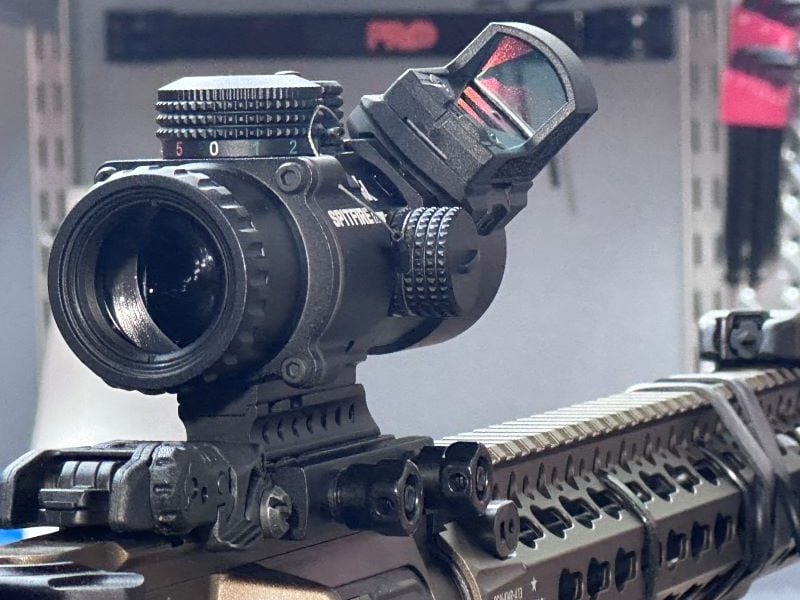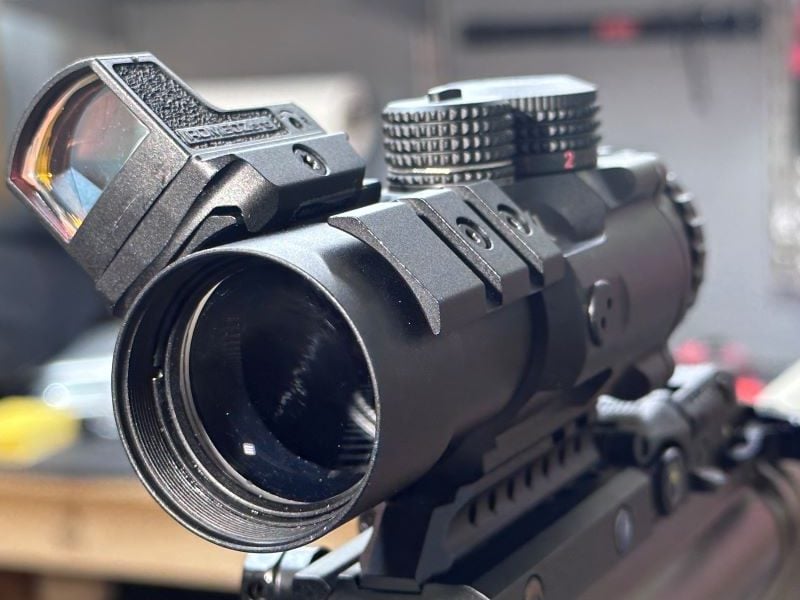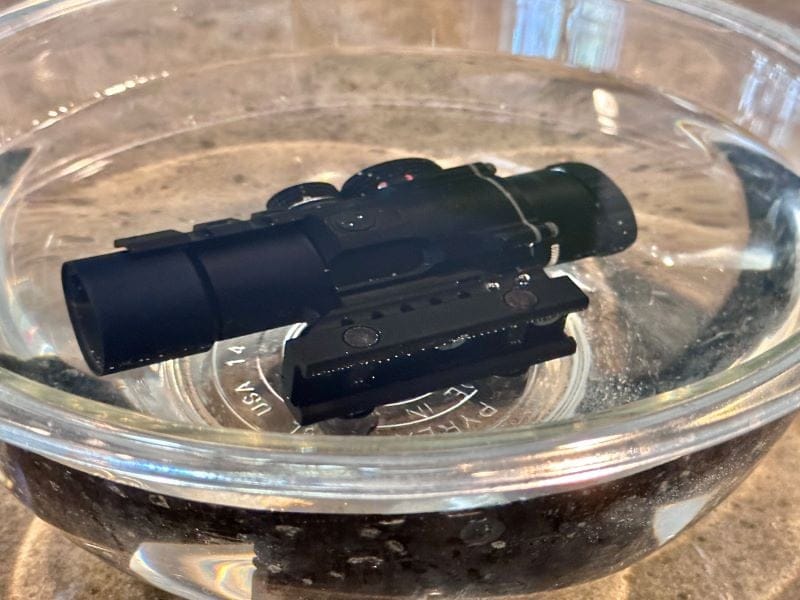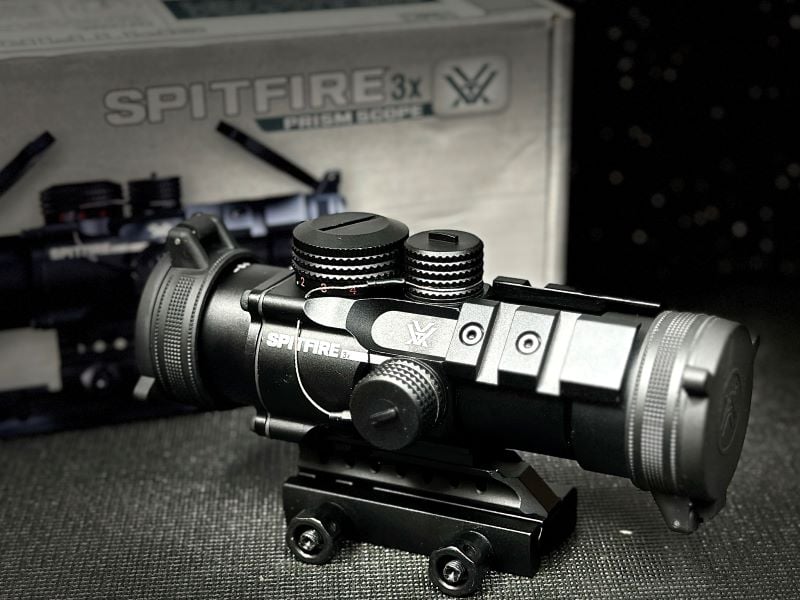Legendary optics like Trijicon, EOTech, and Aimpoint have maintained their reputations for a long time, and not just as the best optics on the planet, but the most expensive as well. This has caused other manufacturers to compete in making an optic that is both durable and reliable while not costing you a gold nugget.
Vortex makes great products and their unconditional lifetime warranty only makes their products more appealing. One of their products that has impressed me is the Spitfire 3X Prism Scope. To some, this is the poor man’s ACOG because the Spitfire runs around $250 while an ACOG will cost you upwards of $800. Both optics are 3X magnified with etched reticles for consistent target acquisition.

If an optic will hold up to these basic stress tests, it makes me feel more comfortable using it on my weapons. This type of test isn’t nearly as extensive or brutal as some other tests out there, but it does show us if the optic can hold up to normal abuse from gun enthusiasts.
What features did Vortex add to the Spitfire Prism Scope?
There are a couple of features that I really like about this scope compared to others in the same price range. The first is the illumination settings. The Spitfire has both red and green reticle illumination settings that are clear and easy to see. The etched reticle allows you to use the scope at any time, even with a dead battery.
The illumination is a bonus feature that makes the reticle easier to see. There are five levels of brightness for both colors. The illumination is powered by a CR2032 battery that is housed in the top of the brightness setting control knob. The other feature I really like is the addition of a Picatinny rail on both sides of the scope.

The FBSD (Freeze, Bake, Soak, Drop) Test
I live in an area where the temperature soars to well over 100° F in the summer and falls under 0° F in the winter. This means I need optics that can withstand hot and cold temperatures. If left in the car in the summer, an optic could easily reach 130° F or more.
I don’t like to break optics just to be breaking them so I find tests that simulate the normal wear and tear I would put them through. The first thing I do before starting the tests is put the optic on a rifle and zero it at 50 or 100 yards. In this case, I did 100 yards with an AR-15 using a .55-grain bullet, since that is what they designed the Spitfire around.
Freezing the Spitfire
For the first part of the FBSD test, I remove the optic and place it in the freezer overnight to make sure it gets good and frozen. Once I remove the optic, I place it back on the rifle and fire a few shots through it to see how it holds up. In this case, the Spitfire did just fine while it was cold. I will note that the optic had thawed greatly by the time I remounted it and made it out to the range.

Baking the Spitfire in the Oven
One of my favorite tests to perform is the oven test. I heat the oven up to 155° F (unless the optic company lists a specific temperature rating on their optic), put the optic on a baking sheet, and place it in the oven. I use an infrared laser thermometer to make sure the outside temperature of the optic reaches 155° F. Once it gets to that point, I leave the optic in for about 10 minutes before taking it back out. I then mount the optic back on the gun and head out to the range for another few shots.
Soaking the Spitfire in Water
The Vortex box says the Spitfire has “waterproof performance.” I’m not sure what this means but I want to know if it can withstand some water submersion. I’m not a Navy Seal so I don’t plan on sneaking up out of the ocean with my rifle and optic. But it is possible for it to get dropped in water or rained on. I placed the Spitfire in a bowl and filled it with water until the optic was submerged.

Drop Testing the Spitfire
I know a lot of guys like to throw things off buildings or run over them with a dump truck just to see if they can break whatever they’re testing. While that’s fun and I enjoy watching the videos of this, I test the optic for a realistic impact that could happen when I’m carrying it. I start out by dropping it on the ground outside several times before I move to harder surfaces.
The concrete in my garage is smooth and doesn’t scratch up the optic as much as the stuff outside so I go there for several drop tests. After dropping it several times from shoulder height, I remounted the Spitfire and checked it again. It was shooting about one inch to the left from where it had been, but that’s not too bad. I gave the windage dial two clicks and had it back on center. For a direct drop on concrete, I can live with that.
A Poor Man’s ACOG?
The MOA adjustments for the Spitfire are ½ per click. The optic has four holdover references at 100/200, 300, 400, and 500 yards. The optic comes ready to mount on a Picatinny rail with a wrench for installation. The plastic covers can be removed easily if you want to take them off while using it. When compared to the ACOG, the Spitfire is slightly larger and bigger around in diameter.
The eye relief is 2.8 inches, and the overall weight is just over 15 ounces. I have said this about other optics in the past and I will say it again. If I were planning to jump out of a plane in WWIII, I would take the ACOG with me. But for anything less, the Spitfire appears to be a durable, solid optic. We won’t know how far its limits are until more testing and more research is done. I would venture to say, however, that this optic would hold up to just about any abuse that comes its way on our favorite rifle. The highlight, of course, is that it’s affordable, making it hard to resist. And, it comes with Vortex’s unlimited, unconditional lifetime warranty.



